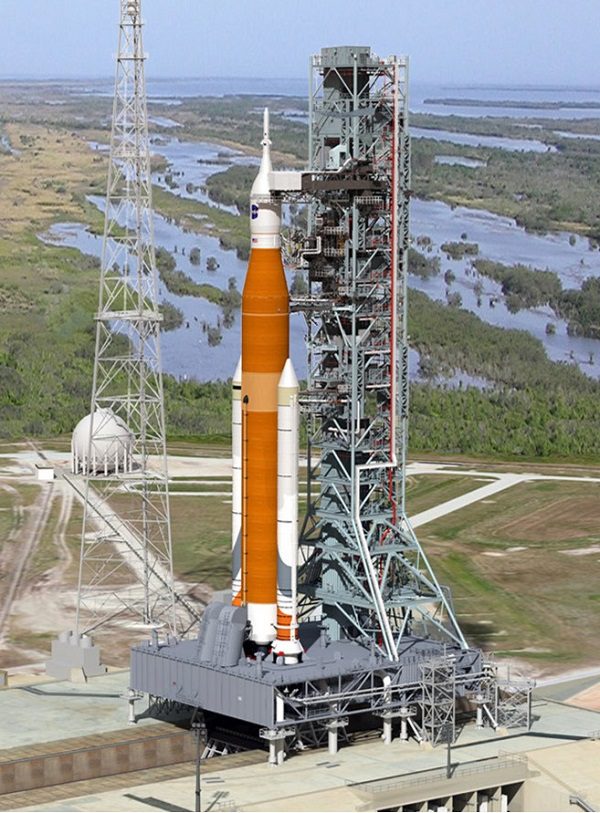The much delayed SLS Heavy-lift Launch Vehicle (HLV) due to take NASA astronauts back to the Moon won’t be going anywhere soon. Its Wet Dress Rehearsal (WDR) on launch pad 39B at the Kennedy Space Centre, starting on 4 April, suffered a series of setbacks that in the end meant more time back in the Vehicle Assembly Building (VAB).
The WDR was designed to allow a full test of rocket systems on the pad, with the propellants fully loaded into both stages and with the Orion spacecraft on top, so that an unmanned flight can occur in June. But all did not go to plan.
Fans to blow away emissions of explosive propellants failed on the mobile launch platform on which SLS rests. This initially prevented a test loading of liquid hydrogen and liquid oxygen into the rocket. That was solved and a later problem with the temperature limit of liquid oxygen loading was worked around.
However, then a loading test was delayed due to the incorrect setting of a hydrogen vent valve to a closed position. While this caused a minor delay, a valve fault proper occurred on the helium purging system’s backflow-preventing check valve on the upper stage, stopping a full loading of the propellants. Due to its location this can only be fixed once back in the VAB.
Nevertheless, other parts of the test continued. That was until 14 April, when one of the umbilical lines was found to have a hydrogen leak. As a result, it was announced on 18 April that the test was over and that SLS and the launch platform would be slowly rolled back to the VAB for repairs. This is likely to delay the maiden flight of SLS to later in the year.
Comment by David Todd: The news is embarrassing for NASA, especially because SpaceX is chomping at the bit to launch its own HLV, the SuperHeavy/Starship combination. While it will fly alongside SLS on Project Artemis (a version of the Starship is being used as a human lunar lander), it is effectively a long-term competitor. Unlike the publicly funded SLS, it has been developed privately in much less time and is projected to cost much less to operate. Its first flight has been held up by regulatory issues involving environmental concerns around SpaceX’s Texas launch site.






